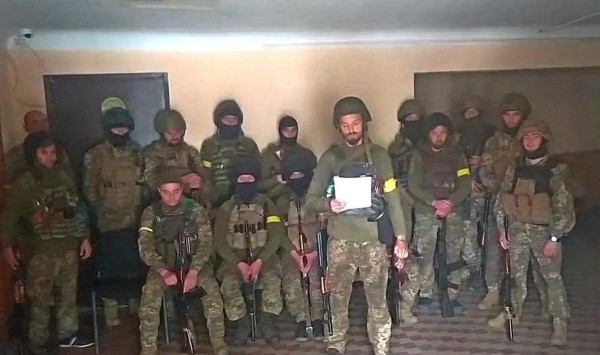In September 1944, the Soviet Union reoccupied Estonia, but not without Estonians making an attempt to restore their independence in the vacuum created by the retreating Germans. Although the attempt failed, the brief interlude is significant in terms of Estonia's legal continuity.
The recapture of Tallinn by Soviet forces on 22 September was far from being a "liberation" for the Estonian people. It merely marked a change in foreign regimes and the beginning of a nightmarishly repressive occupation that would last for nearly 50 more years. The occupation was never recognized by most Western countries. For Estonia, World War II did not end, de facto, until 31 August 1994, with the final withdrawal of former Soviet troops from Estonian soil.
According to the "White Paper" compiled by a special commission established by the Estonian parliament, direct human losses inflicted on the Estonian nation by the occupation regimes reached 180,000, which is 17 per cent of the Estonian population.
The Republic of Estonia did not participate in World War II, since the Estonian Government had declared its complete neutrality right at the outbreak of the war.
Unfortunately, Estonia was caught in a struggle between much larger forces. The secret pre-war agreement (the Molotov-Ribbentrop Pact) signed between Nazi Germany and Communist Russia resulted in the forced annexation of Estonia and the other Baltic states by the Soviet Union. From 1941-1944, Estonia was the theatre for battles between Germany and the Soviet Union. After independence was lost in 1940, the citizens of Estonia became the victims of aggression by these foreign powers and, in serious violation of the international law of war, were conscripted into the armies of the occupying countries. As a result, Estonians ended up serving in various branches of the German military, such as the Estonian Waffen SS units.
At the beginning of 1944, Estonia's underground National Committee and its constitutional Prime Minister acting as president, Jüri Uluots, called upon Estonians not to avoid the German mobilisation, irrespective of the fact that it violated international law.
Estonians hoped that with German weapons they could create a national army, and thus be able to prevent a new Soviet occupation, as well as be able to restore Estonia's independence. Nazi Germany of course refused to accept the restoration of Estonia's independence, but, at that point, Estonians had no doubt that Germany was losing the war, and that the Estonian nation would have to start dealing, one way or another, with the oncoming Soviets.
Taking advantage of the momentary political situation - the German forces were in retreat and the Soviet forces had not yet reoccupied the country - Acting President Jüri Uluots, operating underground, appointed, on 18 September 1944, a new broad-based coalition government led by Otto Tief. The aim was to restore Estonian independence. The Tief government declared the continuity of the Republic of Estonia and its neutrality in the ongoing war. At the same time, efforts were made to organize the defence of Tallinn.
As German forces were evacuating from Tallinn, the national tricolour was raised on Pikk Hermann Tower - the seat of the Estonian government – where it flew on 21 and 22 September. Two issues of the Riigi Teataja (State Gazette) and a governmental declaration of Estonian neutrality in the war were issued by the Government of Otto Tief before Soviet troops conquered Tallinn on 22 September 1944. The Estonian national tricolour was torn from the mast on Tallinn's Pikk Hermann Tower and was replaced by the symbol of the new occupation, the red banner. Fierce battles continued to rage on the islands off the west coast of Estonia, but by the end of November, all of Estonia was again under Soviet control.
The government left Tallinn prior to the Red Army's arrival and went into hiding. But most of the cabinet members were later arrested and suffered various repressions by the Soviet authorities, or were sent to labour camps in Siberia. Jüri Uluots managed to escape to Sweden, where he died shortly after his arrival. Before his death, he appointed August Rei as his successor, who, in 1953, in Oslo, appointed the Estonian Government in Exile. The exile government officially ceased its activities on 7 October1992, when - in the Estonian Parliament - Heinrich Mark, the acting President of the Republic in exile, handed his credentials over to Lennart Meri, who had been elected, by the citizens of the reindependent nation, President of the Republic.
The occupied Baltic states were the only countries, that had been overrun during the course of World War II, whose independence was not restored at the end of the war. It must also be noted, that the Atlantic Charter's points concerning territorial adjustments and self-determination were not applied to the Baltic states, even though the Soviet Union, too, had acceded to the charter. And the Baltic states were the only members of the League of Nations that were not given seats in the new world organization, the United Nations. But fortunately, there was an exile government to embody the de jure continuity of the Republic of Estonia for the subsequent period of almost half a century.
Although the attempt to restore Estonian independence in September of 1944 did not succeed, the Otto Tief Government proved to be an integral part of the de jure continuity of Estonia.
Further information:
The Kistler-Ritso Estonian Foundation www.okupatsioon.ee
The White Book http://www.just.ee/orb.aw/clas...
WhiteBook.pdf
Estonian History http://www.vm.ee/estonia/
(Fact Sheet September 2006, Press and Information Department, Estonian Ministry of Foreign Affairs)
22 September 1944: The Otto Tief government and the fall of Tallinn (1)
Archived Articles | 22 Sep 2006 | EWR
Viimased kommentaarid
Kommentaarid on kirjutatud EWR lugejate poolt. Nende sisu ei pruugi ühtida EWR toimetuse seisukohtadega.
Just to remind readers that Acting President Uluots did not appoint August Rei as his successor to head the exiled government. It has been reported that Rei was not even sworn in as cabinet minister by Uluots as was required by the Constitutionit. Rei, at that time already in Sweden, had been appointed minister of foreign afffairs in Otto Tiefs government of 18 September 1944 and assumed the leadership position pursuant to the provision of Estonian Constitution that in the absence of the prime minister and an acting prime minister the eldest member of the cabinet takes over as the acting prime minister.
Väino J. Riismandel,
Maryland, USA
Väino J. Riismandel,
Maryland, USA
Archived Articles
TRENDING




















